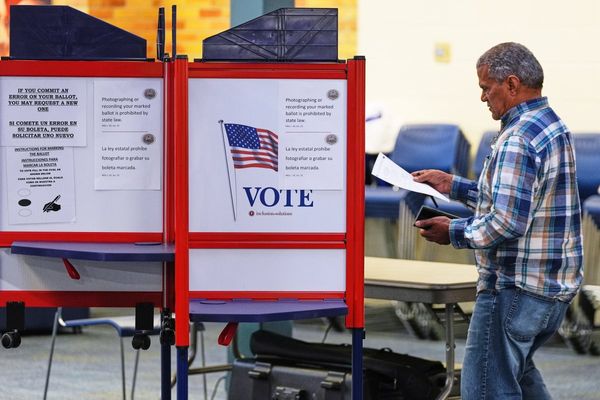
It’s one of the remarkable rags-to-riches tales around, particularly because it happened twice within a five-year period. Online used-car dealership Carvana (CVNA) initially faltered — like most other publicly traded enterprises — following the immediate impact of COVID-19. However, the surge for vehicles amid the global supply chain disruption saw CVNA stock skyrocket.
Adding to the enthusiasm, of course, was the fact that contactless services commanded a premium during the worldwide health crisis. This attribute natively facilitated a clear advantage for Carvana. But as society gradually normalized, the need for minimal-contact transactions faded. Combined with gradual normalization of supply chains, CVNA stock cratered.
However, that wasn’t the end of the online dealership. A combination of factors, including operational restructuring and cost reductions — along with unexpected market dynamics resulting in elevated demand for used cars — helped send CVNA stock northward yet again. Unfortunately for the bulls, circumstances appear to be coming full circle twice.
As my Barchart colleague Will Ashworth noted, short-seller Hindenburg Research implied that Carvana was cooking its books, labeling its turnaround as a mirage. The controversial firm accused the dealership of carrying a subprime loan portfolio, lax underwriting standards and financial manipulation of its sales, among other spicy talking points.
It must be said that Carvana has denied all of Hindenburg’s allegations. That didn’t stop investors from rushing for the exits, eventually leading to an 11.22% loss in CVNA stock on Friday. Still, amid this chaos is a potential trading opportunity.
Using Math and Barchart Premier to Forge a Gameplan for CVNA Stock
In Ashworth’s article, he proposed two strategy ideas: a protective collar for those who are optimistic about CVNA stock and a bear put spread for those who are pessimistic. If forced between the two perspectives, my colleague indicated that he is “bullish to the bone.” It’s not an unreasonable opinion given Carvana’s clear bounce-back abilities.
At the same time, it’s difficult to know where CVNA stock will ultimately head. Looking at its wild ebb and flow, one quickly gets the impression that if you pick the wrong direction, you’re going to feel it — badly. With that, a long iron condor to wager on rising implied volatility seems to be the relatively prudent choice. But which condor to choose?

This question can be answered with some math and a Barchart Premier membership, which enables investors to download CVNA’s historical price data, which I did for the past five years. Armed with this information, we can conduct a Bayesian inference to calculate the probability of profit sometime in the future (I chose four weeks out) based on various volatility spectrums.
These are CVNA’s market responses four weeks following the below negative returns:
- 0% to 5% loss: 54.55% (bullish) success ratio, with an average positive return of 24.48% and average negative return of 16.37%.
- 5% to 10% loss: 65.79% success ratio, 28.77% up, 19.79% down.
- 10% to 15% loss: 62.5% success ratio, 51.93% up, 23.57% down.
- 15% to 20% loss: 36.36% success ratio, 27.38% up, 41.6% down.
- Worse than 20% loss: 31.58% success ratio, 50.89% up, 28.12% down.
Interestingly, over the past five years, the average weekly return comes out to 1.53%. Under “normal” market conditions — that is, when CVNA sees a weekly performance between 1.5% down to 1.5% up — the typical upswing four weeks out is 19.18%. On the downside, investors risk incurring a 12.7% loss.
With this intelligence, we can now plot a specific long iron condor trade.
Zeroing In on a Specific Trade for Carvana
For the business week ending Jan. 3, CVNA stock lost almost 16% of market value, putting it into the 15% to 20% loss bucket mentioned above. If statistical trends play out, there could be a nearly 64% chance that CVNA falls four weeks from now, which coincides with the options chain expiring Jan. 31. Under the negative scenario, shares could potentially lose almost 42%.
On the other hand, CVNA stock is historically wild and unpredictable. On the positive side, it could rise more than 27%. That’s a very reasonable target considering the average positive returns under various weekly volatility scenarios. Therefore, on the upside, CVNA may reach $225.67.
For the downside target, it’s possible that shares could fall to $103.46. However, a more reasonable target is to assume that CVNA could be liable to lose around 25%. That puts a bearish target of $132.87 on the books.
Now, with the information available from Barchart Premier, we identify the long iron condor for the Jan. 31 options chain that best fits the aforementioned price targets. In my opinion, the ambitious 135P | 150P || 210C | 225C condor — or the combination of the 135/150 bear put spread and 210/225 bull call spread — is in play.
For this trade to be fully profitable, CVNA stock must either rise to or above $225 or fall to or below $135 by Jan. 31. As we calculated earlier, this range is within the realm of possibility and arguably in the realm of probability. What’s more, the payout clocks in at 154.67%.
Notably, if we assume normal market conditions (±1.5%), CVNA would be projected to rise to $211.14 or fall to $154.66. However, the payout for long iron condors that meet this criterion is extremely small. In other words, the market expects normal behavioral responses. It’s not expecting probabilities calculated dynamically, which is what makes the 135P | 150P || 210C | 225C condor so compelling.







